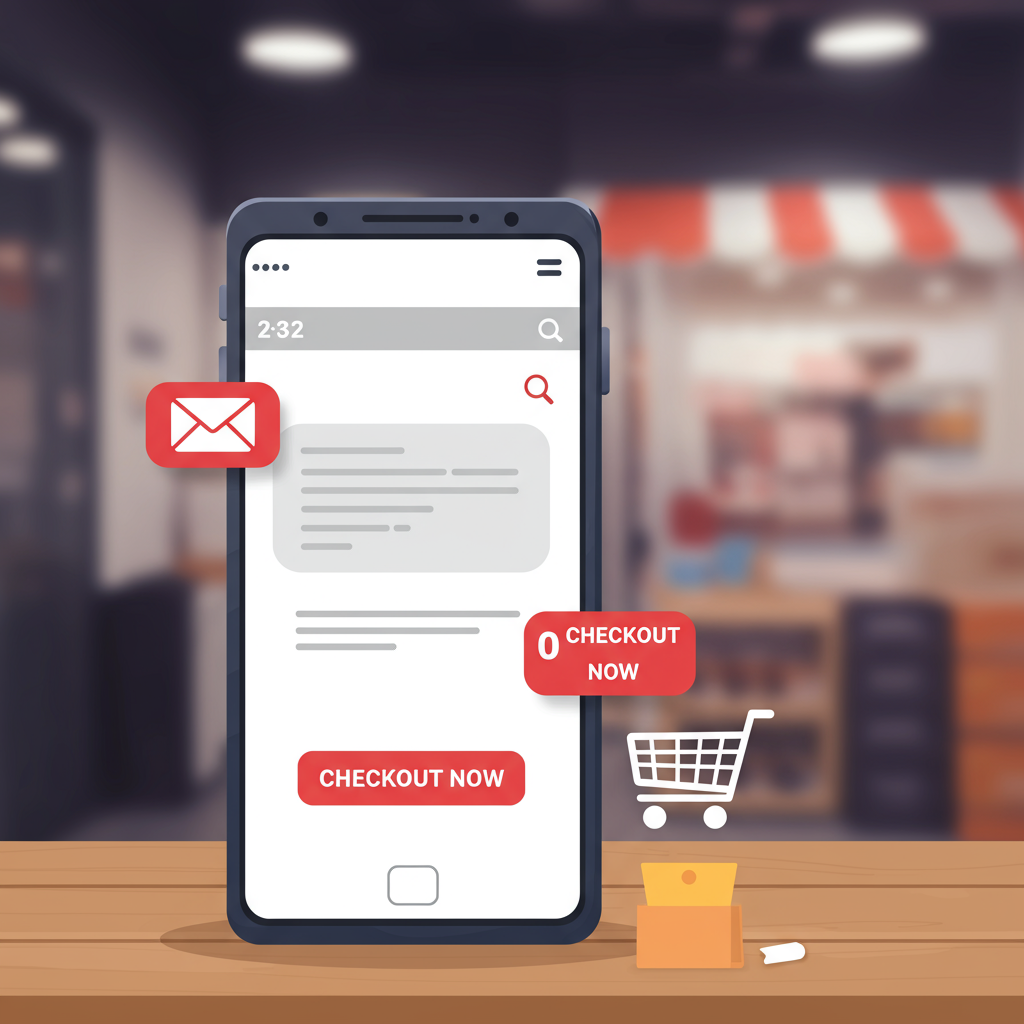Discover how direct, timely SMS messages can transform abandoned carts into completed purchases for your Shopify store.
As a Shopify merchant, I know the familiar sting of an abandoned cart. It’s a universal challenge in e-commerce, representing a significant chunk of potential revenue that simply slips away.
Imagine a customer browsing your store, adding items to their cart, and then, for whatever reason, they leave without completing their purchase. It feels like money left on the table, doesn’t it?
But what if I told you there’s a highly effective, immediate way to nudge those customers back to their carts and recover those lost sales?
I’m talking about leveraging the power of SMS marketing specifically for abandoned carts. This isn’t just another marketing channel; it’s a direct, personal line to your customer.
Think about your own habits: how often do you check your email versus your text messages? For most of us, SMS notifications are almost instantly seen and opened.
The average SMS open rate hovers around an astounding 98%, far surpassing the typical email open rates. This immediacy is precisely why SMS is a game-changer for abandoned cart recovery.
When a customer leaves items in their cart, time is of the essence. The longer you wait, the less likely they are to return. An SMS can reach them within seconds, reminding them of their intent.
So, how do we set up an effective and compliant abandoned cart SMS campaign for your Shopify store? Let me walk you through the process.
First, you’ll need a reliable SMS marketing app from the Shopify App Store. Look for apps that integrate seamlessly with Shopify, offer automation features, and provide detailed analytics.
Crucially, before you send any messages, you must obtain explicit consent (opt-in) from your customers to receive SMS marketing messages. This is non-negotiable for compliance with regulations like TCPA (in the US), GDPR (in Europe), and CTIA guidelines.
Once you have their consent, the real magic begins: crafting your message flow. I highly recommend a multi-message sequence, typically 2-3 messages, sent at strategic intervals.
**Message 1: The Gentle Reminder.** Send this within 15-30 minutes of cart abandonment. It’s a soft nudge, designed to catch them before they’ve moved on to something else.
A simple message like: ‘Hey [Customer Name], you left some great items in your cart at [Your Store Name]! Complete your order here: [Link to Cart]’ works wonders. Keep it short, sweet, and to the point.
**Message 2: The Incentive Nudge.** If they haven’t converted after 4-6 hours, consider sending a second message with a small incentive.
This could be a small discount code, free shipping, or a free gift. For example: ‘Still thinking about your [Item Name]? Here’s 10% off your order at [Your Store Name]! [Discount Code] [Link to Cart]’.
This message aims to overcome any lingering hesitation, whether it’s about price or shipping costs, and provides a clear reason to return.
**Message 3: The Final Push.** If there’s still no conversion after 24 hours (or up to 48 hours for higher-value items), a final, stronger push might be appropriate.
This message could highlight scarcity or a limited-time offer: ‘Your cart at [Your Store Name] is about to expire! Don’t miss out on [Item Name]. Complete your order now: [Link to Cart]’.
Remember to personalize each message. Using their name and mentioning specific items from their cart makes the message feel less generic and more relevant.
Your call-to-action (CTA) must be crystal clear and compelling. Always include a direct, trackable link back to their abandoned cart to make it as easy as possible for them to complete the purchase.
Beyond the messages themselves, timing is paramount. Experiment with different delays between messages to find what resonates best with your audience.
Segment your audience where possible. High-value carts might warrant a slightly different approach or a more generous incentive than lower-value ones.
A/B test your message copy, the types of incentives you offer, and your timing. Continuous optimization is key to maximizing your recovery rates.
Don’t forget to track your key performance indicators (KPIs). Look at the conversion rates from your SMS campaigns, the total revenue recovered, and the overall return on investment (ROI).
Avoid common pitfalls: never send messages without explicit opt-in. Don’t send too many messages, as this can quickly lead to annoyance and opt-outs.
Generic messages that lack personalization will fall flat. And always, always ensure you are compliant with all local and international SMS marketing regulations.
Integrating SMS with your email and other marketing efforts creates a cohesive, multi-channel recovery strategy. It’s about providing multiple touchpoints, not just relying on one.
By implementing a robust Shopify abandoned cart SMS campaign, you’re not just recovering sales; you’re building stronger customer relationships through timely, relevant communication.
I truly believe this strategy can significantly boost your bottom line and turn those frustrating abandoned carts into valuable completed orders.
What do you think about this article and the potential of SMS for your store? I’d love to hear your thoughts and experiences.
Embrace the power of direct communication, and watch your Shopify sales climb!






